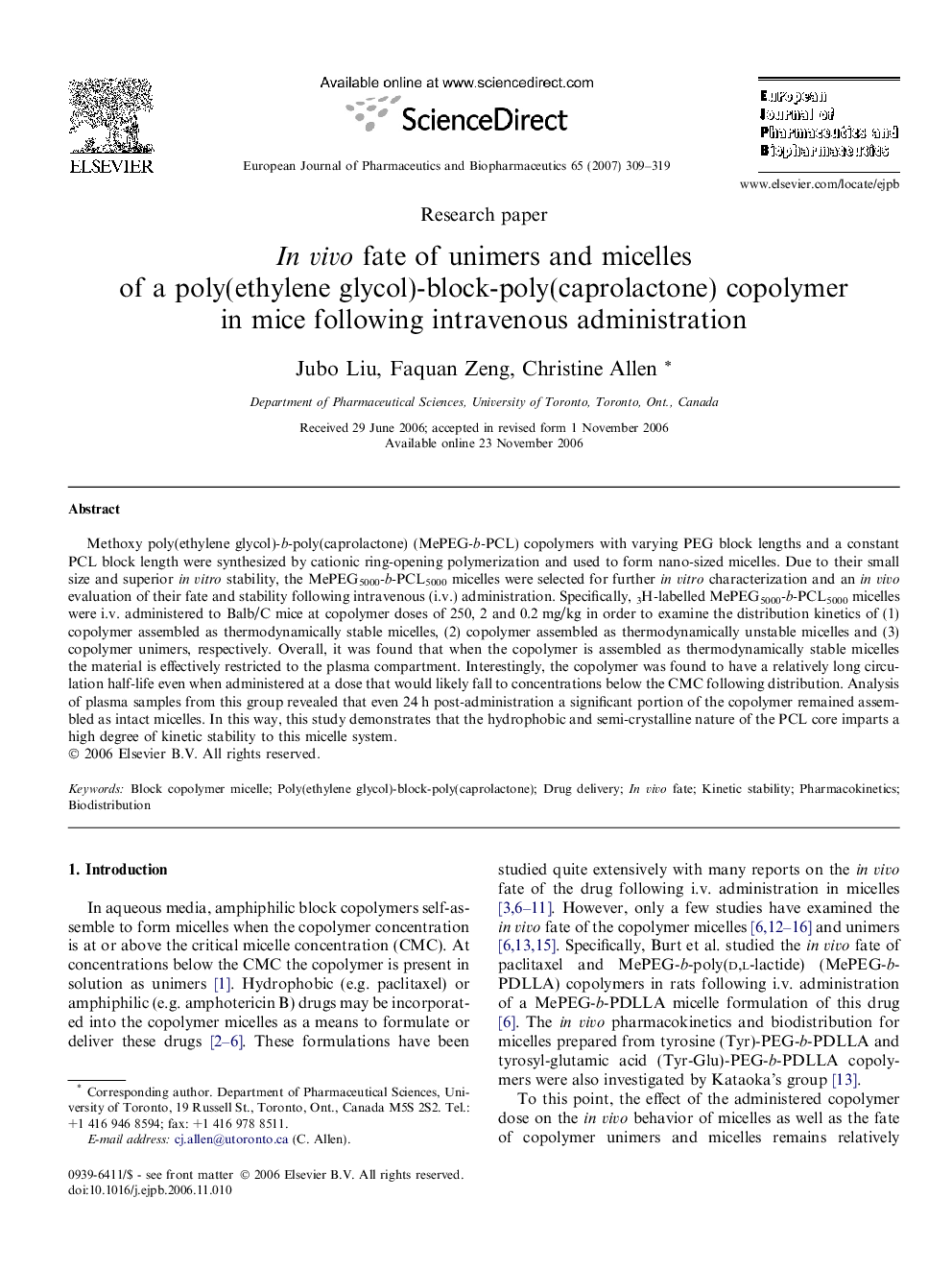| Article ID | Journal | Published Year | Pages | File Type |
|---|---|---|---|---|
| 2085187 | European Journal of Pharmaceutics and Biopharmaceutics | 2007 | 11 Pages |
Methoxy poly(ethylene glycol)-b-poly(caprolactone) (MePEG-b-PCL) copolymers with varying PEG block lengths and a constant PCL block length were synthesized by cationic ring-opening polymerization and used to form nano-sized micelles. Due to their small size and superior in vitro stability, the MePEG5000-b-PCL5000 micelles were selected for further in vitro characterization and an in vivo evaluation of their fate and stability following intravenous (i.v.) administration. Specifically, 3H-labelled MePEG5000-b-PCL5000 micelles were i.v. administered to Balb/C mice at copolymer doses of 250, 2 and 0.2 mg/kg in order to examine the distribution kinetics of (1) copolymer assembled as thermodynamically stable micelles, (2) copolymer assembled as thermodynamically unstable micelles and (3) copolymer unimers, respectively. Overall, it was found that when the copolymer is assembled as thermodynamically stable micelles the material is effectively restricted to the plasma compartment. Interestingly, the copolymer was found to have a relatively long circulation half-life even when administered at a dose that would likely fall to concentrations below the CMC following distribution. Analysis of plasma samples from this group revealed that even 24 h post-administration a significant portion of the copolymer remained assembled as intact micelles. In this way, this study demonstrates that the hydrophobic and semi-crystalline nature of the PCL core imparts a high degree of kinetic stability to this micelle system.
